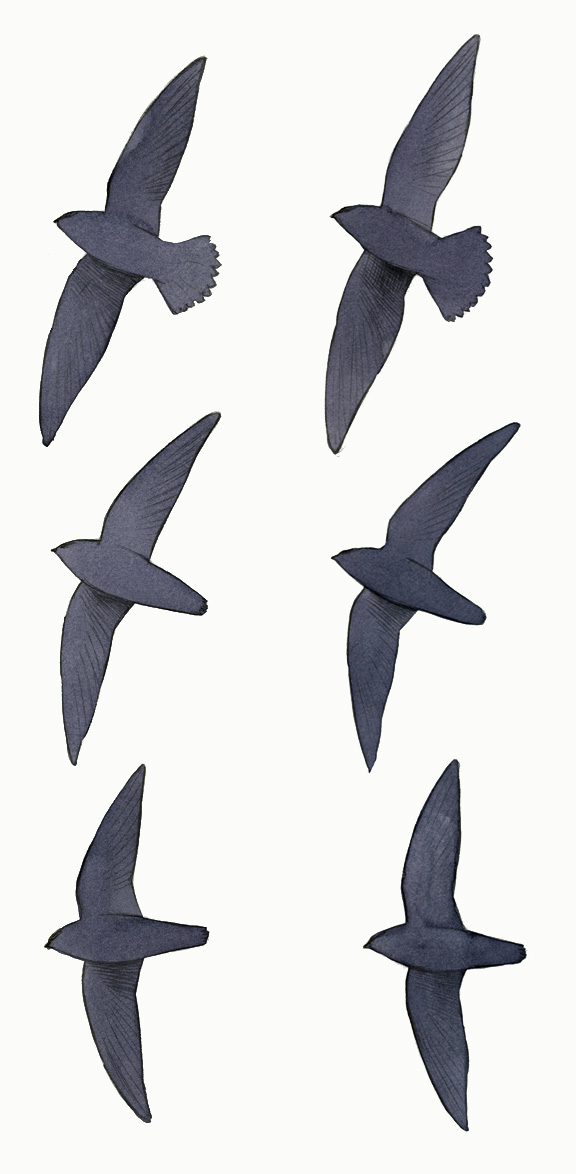For most observers the identification of these two species is simple, and is based entirely on location, with Vaux’s in the west and Chimney in the east. It is extremely rare to see the two species together, which means that few observers ever have the chance to study them in direct comparison, and therefore few people ever gain the experience that is needed to sort out subtle differences in shape. For a summary of ID click here.
I have always had to settle for seeing each species on its own, usually separated by days or weeks and by hundreds of miles. Nevertheless, I have consistently gotten the impression that there are real differences in wing shape, and this has been reinforced by the comments of people who have seen the two species together and describe the Chimney Swift as distinctly larger and longer-winged.
Studying all of my notes along with dozens of photographs led to the sketches below, and I think these show some consistent differences in wing shape. More study and field testing is needed, and differences are small and subjective, but perhaps there is hope for distinguishing these two species by shape alone.

The principal difference between the species appears to be the more evenly tapered and straight-edged wings of Vaux’s Swift (vs. the bulging inner primaries of Chimney). This is visible in series of photos and is something I have consistently taken note of in my field sketches. Individual photos of one species can often look like the other, but in a series of photos or an extended observation the overall impression should be different.
It has sometimes been said that Chimney Swift is longer-winged and longer-tailed (e.g. The Sibley Guide to Birds, 2000), but this is not correct. Comparing the size-matched images above the Chimney Swift appears to have slightly narrower wings, not longer, and there is no difference in head or tail proportions (except that the head of Chimney Swift may appear relatively small, as in the proportions of different-sized sandpipers described here).
The substantial difference in size (Chimney averages about 10% larger) and mass (Chimney Swift averages about 30% heavier than Vaux’s) probably makes it more difficult to judge subtle differences in proportions, especially when viewing a single bird. These differences in shape are variable and are certainly not easy to see and to judge on a rapidly moving bird. Nevertheless, given some practice, the bulging inner primaries and overall narrower wings of Chimney Swift might enable observers to make more confident identifications of silent swifts.


Hello David. Looking at photos of Chaetura swifts in flight, it seems that relative length of the wing chord to the inner wing (or in other words, the trailing edge of the wing along the primaries compared to the trailing edge of the wing along the secondaries/tertials) may be a useful diagnostic measurement. It seemed that this ratio was about 4.0 for Chimney Swift, and 6.0 for Vaux’s Swift. Maybe I was mislead by the postures in the particular photographs I examined. Have you evaluated this possible distinguishing measurement?
Something similar to this may be of use in identifying the genuinely impossible swiftlets of Asia!